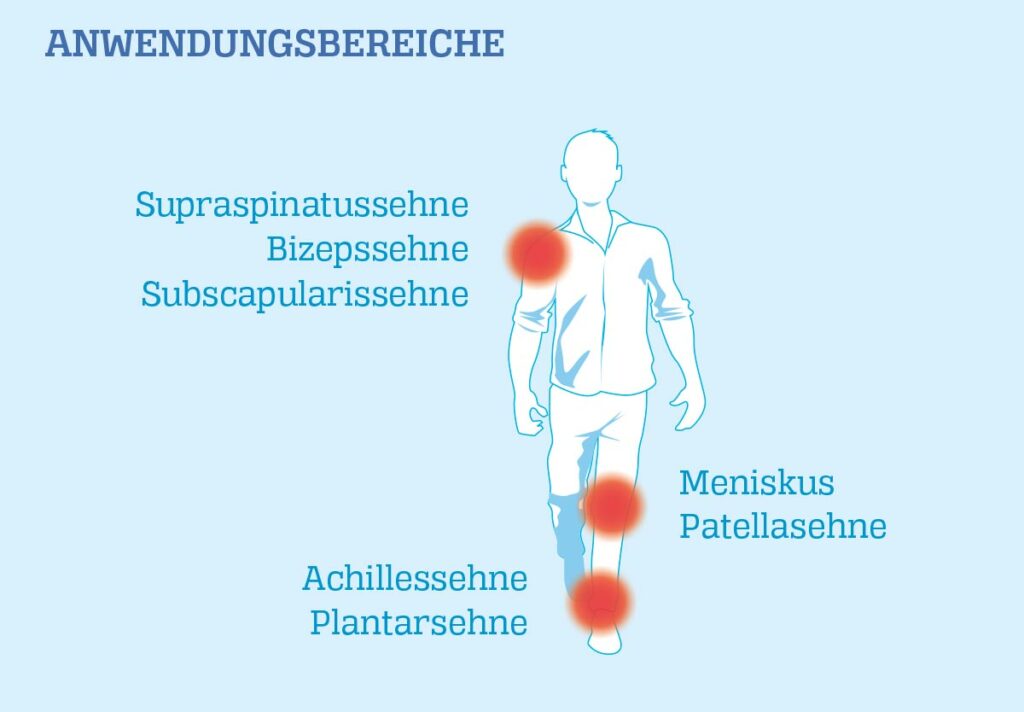
APPLICATION AREAS
Supraspinatus tendon Meniscus patella tendon
Biceps tendon
Subscapularis tendon
Achilles tendon
Plantar tendon
The medial meniscus is located on the inside and the lateral meniscus on the outside of the knee. Both menisci stabilize the movements of the knee joint, distribute pressure and absorb shocks. They also lubricate the joint cartilage and supply it with nutrients.
Meniscus tears are among the most common knee injuries in sports, but they can occur just as quickly as a result of incorrect, rapid movements. The meniscus can tear, for example, when the knee is twisted under heavy load.
Wear-related (degenerative) meniscus tears, which occur in many people over the course of their lives, are often not even noticed and the pain occurs gradually. Wear-related meniscus damage is particularly common in people with knee osteoarthritis.
In the OPEN MRI on the premises of the ROC, we can make a diagnosis quickly, without radiation or pain, and with excellent image quality.
At the ROC, we try to avoid surgery. Therefore, we have specialized in the refixation of meniscus or tendon tears with fibrin glue. We use a tissue adhesive that has been proven in medicine for decades. The procedure is minimally invasive.
Because: the gentler the intervention, the higher the chances of recovery!
The procedure is virtually painless and is performed under local anesthesia. Meniscus and tendon lesions are treated minimally invasively under MRI visual control by refixation with a tissue adhesive.
The separated tissue parts are thereby rejoined. The adhesive fixes the torn meniscus so permanently and effectively; therefore, the full weight-bearing (without sport activities) is possible again immediately after the procedure. Therefore, the risk of thrombosis is also very low.
In most patients, glued tears heal to a large extent within 6 weeks, so that the load can then be increased again and systematic muscle building and initial sporting activities can begin.
Physiotherapy and appropriate muscle building training can be used to support regeneration after refixation.
We will issue the prescription and arrange appointments with one of our excellent physiotherapists.
Make your appointment for a consultation at our practice!